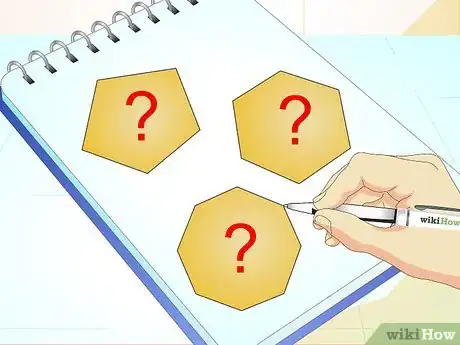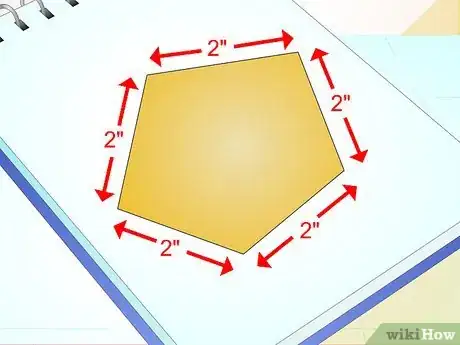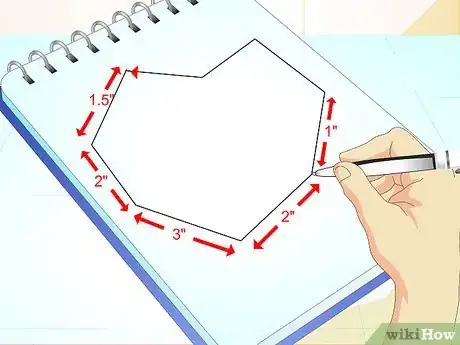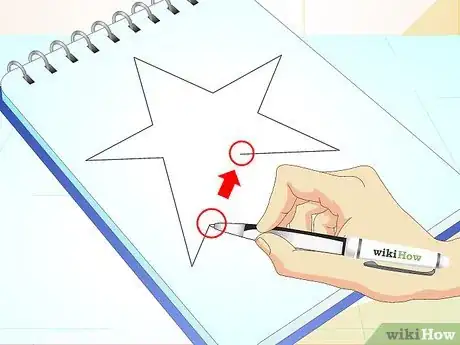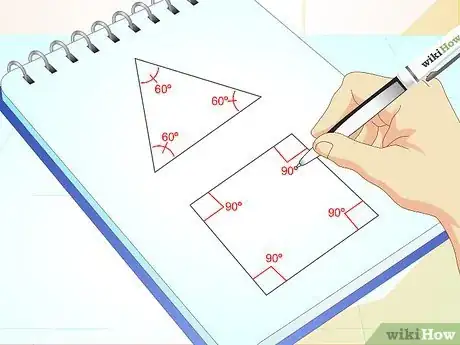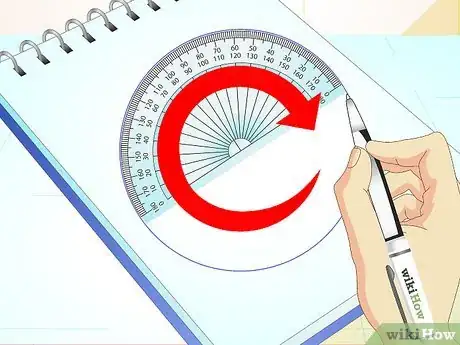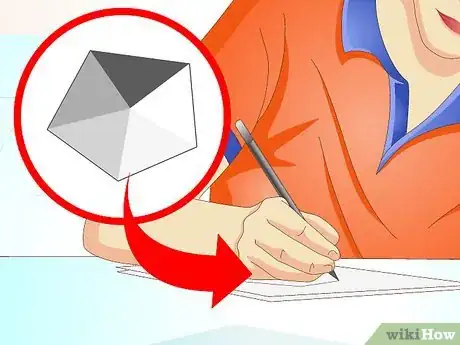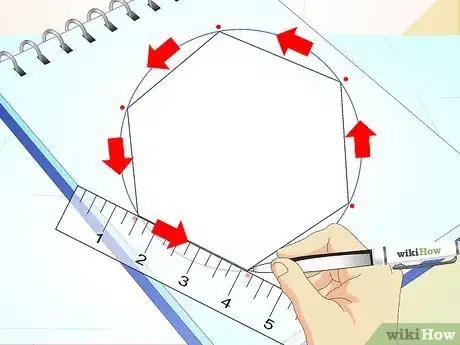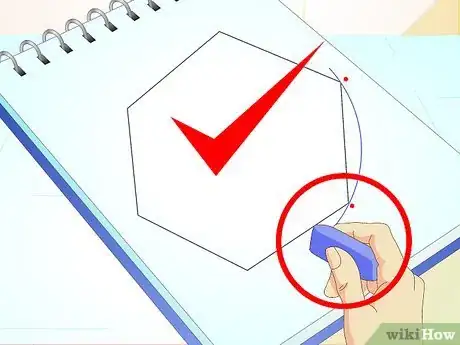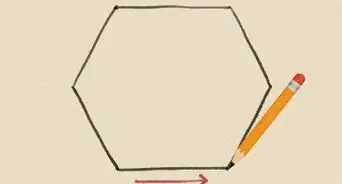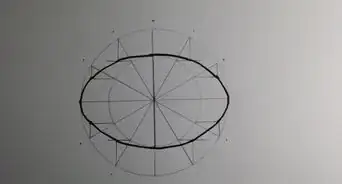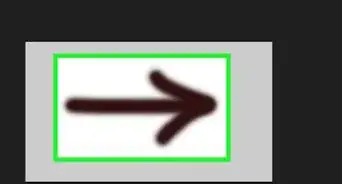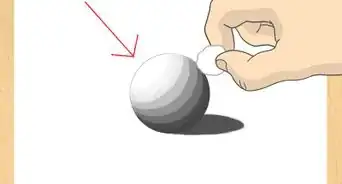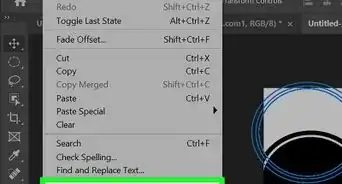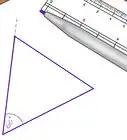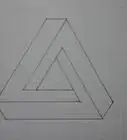wikiHow is a “wiki,” similar to Wikipedia, which means that many of our articles are co-written by multiple authors. To create this article, 18 people, some anonymous, worked to edit and improve it over time.
This article has been viewed 183,514 times.
Learn more...
Do you want to draw a polygon? A polygon is a figure formed by coplanar segments, the segments of the polygon are called sides. There are many different types of polygons, but they all have edges (or sides) and vertices (or corners).[1]
Steps
-
1Get an idea of what polygon you want to draw. There are many different types of polygons. Polygons are usually classified by the number of sides they have. For example, a pentagon has five sides, a hexagon has six, and an octagon has eight. Mathematicians use the term "n-gon" to refer to a polygon with "n" sides. There is no end to the number of sides a polygon can have, and a polygon can be a simple polygon, meaning that its sides don't cross one another, or a star polygon, meaning that they do.[2]
-
2Figure out if you want/need to construct a regular polygon. A regular polygon is one where all the angles are equal in measure and all the sides are equal in length. While most people may think of polygons in this way, not all polygons are regular. Drawing a regular polygon is more challenging than drawing any old polygon; if you want to make one along these lines, you can learn more at How to Construct Regular Polygons Using a Circle.</ref>https://mathworld.wolfram.com/RegularPolygon.html</ref>
Drawing a Basic Polygon Easily
-
1Make the task easy, if you want. A polygon doesn't have to be regular to be a polygon. If you want to keep your drawing process easy, just use a straight edge and pencil and draw several line segments that interact to form a closed shape. In itself, that's a polygon![3]
- While most people think of regular polygons when they hear the terms "hexagon," "octagon," etc, these terms don't always indicate that the polygon is regular. A "hexagon" just has to have six sides; a "regular hexagon" has to have six sides of equal length, with equal interior angles.
-
2Always close the shape. Whether you decide to do a simple polygon or a star polygon, the segments do have to be in a circuit, meaning there's no opening on one side. Keep it closed, and keep every line straight, and you're good to go![4]
-
3
Drawing a Regular Polygon
-
1Understand what makes a polygon "regular". A regular polygon is one where all of the sides and all of the angles are the same length. Perhaps the easiest regular polygons to identify are the equilateral triangle (with three sides of the same length and internal angles of 60 degrees each) and the square (with four sides of the same length and internal angles of 90 degrees each). However, you can make regular polygons far more complicated than that![5]
-
2Decide what kind of regular polygon to draw. In drawing a regular polygon (or a polygon of any kind, for that matter), you have many choices. For example:
- You can draw a regular polygon using a circle.
- You can draw a square.
- You can draw a regular pentagon, with five equal sides/angles.
- You can draw a regular hexagon, with six equal sides/angles.
- You can draw a regular octagon, with eight equal sides/angles.
- You can draw a polygon with as many sides/angles as you want! See the next method and How to Construct Regular Polygons Using a Circle for more details.
Drawing a (Regular) Polygon Using a Protractor
-
1Draw a circle on the paper by tracing the protractor. Since a protractor is semi-circle, you need to start with it against one line, marking the middle and each end with dots. Then trace the protractor's edge to make a semi-circle, before turning it around (matching the center and edge dots on the other side) and re-tracing it again.
-
2Figure out how many angles/sides you want.
-
3Calculate the central angle between lines from the center to adjacent vertices. The total degrees contained in a circle is 360, so you just need to divide 360 by the number of sides which is the same as the number of vertices. This value will be the measurement of the angle between any lines drawn from the center of the circle to each corner of the polygon.
- For example, if you're drawing a hexagon, this value will be 60 degrees.
-
4Use a protractor to draw dots on the circle, at every one of these angle measurements. In other words, you'll want to pick a point to start, and then work your way around the circle, drawing a dot at each successive degree measurement.
- For example, if you're trying to draw a hexagon, you'll pick a point to draw you first dot; then you'll draw your next dot 60 degrees over from that point, and so on, until you've drawn all six points.
-
5Join each dot with a straight line. You'll want to use a ruler for this, and make sure your lines don't overlap. It's a good idea to draw the lines lightly so that you can erase any mistakes or overlaps.
-
6Erase the lines and circle. And you've done it! If you want to be sure that your polygon is definitely regular, double-check that all your line segments are the same length as each other.
Community Q&A
-
QuestionHow do I draw a pentagon given length of the side 40mm vertically?
 AnonymousSuperWriterCommunity AnswerTo draw the pentagon, make two marks; one beside the zero on the ruler and the other one beside the 40 mm ( 4 cm ). Next, make an equilateral pentagon in between the two marks.
AnonymousSuperWriterCommunity AnswerTo draw the pentagon, make two marks; one beside the zero on the ruler and the other one beside the 40 mm ( 4 cm ). Next, make an equilateral pentagon in between the two marks.
Things You'll Need
- Pencil
- Ruler
- Protractor - required for a regular polygon
- Paper
- Calculator
References
About This Article
To draw a polygon, start by drawing a circle on a piece of paper using a protractor. Then, decide how many sides you want your polygon to have. Once you've decided, divide 360 by the number of sides to find out what the angle between each set of neighboring lines should be. Next, use the protractor to mark dots on the edge of the circle that correspond with the angle you just calculated. Finally, draw a straight line between each neighboring dot, erase the circle, and you're finished. If you want to learn how to draw a regular polygon, keep reading the article!
